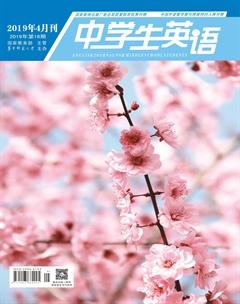A Glimpse of Cultural Differences in Translation
谢惠娟 朱志锋
In terms of culture, translation is intercultural communication. Cultural concepts, which underlie the variety of language usage and language habits, come to be the key area of translation studies. Different cultures not only give rise to failures or misunderstandings in cross-cultural communication, but also pose headaches to translators. The following are main cultural differences in translation.
1. Geographical Differences
A certain culture always exists in a certain region. If the region is different, the natural sights in this region also have their particular characteristics which reflected in language is regional cultural differences. Let me cite “泰山”as an illustration. Taishan, in the Chinese saying “有眼不識泰山”, originally means a great Chinese mountain, which indicates those outstanding figures. For a foreigner who knows little of Chinese culture, he may have great difficulty in understanding the words figurative meaning. The different geographical characteristics make the translators search for new ways to establish cultural equivalence.
2. Differences of Historical Backgrounds
Owing to different historical background, different nations have formed a great many historical allusions. They normally contain complex information though in a simple structure. Thus, the allusions cannot be translated word for word; otherwise the readers will be at a loss. In China, we often say “说曹操,曹操到” To Chinese people, the meaning is very clear, but to a foreigner, “Caocao” may not be so well-known. A young translator once translated this sentence in a banquet orally like this: “When we talk of Mr. Cao, Mr. Cao comes.” When the guests heard this sentence, they all stood up politely, for they thought there was coming a Mr. Cao. In fact, such a historical allusion should be translated freely: “Talk of the devil and he will appear.” Judging from this, the differences of historical background may be a great factor that causes untranslatability of a source text.
3. Differences of Thought Patterns
The divergence of thought patterns resulting from different perceptions about the world usually results in obstacles in communication and cooperation. Generally speaking, westerners pay more attention to scientificness and accuracy, while easterners are inclined to thoroughness and ambiguity. Some translator interprets “女大十八变” into the following: “A girl changes eighteen times before reaching woman land.” True, this translation is very faithful to the source words “十八变”. However, it makes the western readers puzzled rather than achieving the purpose of communication. They may ask such questions as “What is the scientific criterion of ‘eighteen times change” or “how to divide them?” The critical reason for the misunderstanding is that the translator ignores the differences between Chinese and Western thought patterns, regarding the form words “十八” in Chinese as notional word “eighteen” in English.
4. Differences of Cultural Backgrounds
Its well known that modesty in Chinese peoples eyes is a virtue. Chinese people love the plum blossom largely because of its reservation. If the translators want to interpret the cultural connotation of “賤内” or “糟糠”, Im afraid its a headache for them. It is certain that “my wife” or “my humble wife” cannot be effective. That is to say, by virtue of the different cultural background, some humble words in China are untranslatable, or can only be relatively translated.
Although cultural differences are inevitable and bring about difficulties in translation, they are not definite. The translators should strive to convey the implied meaning between the lines and cultural connotation, rather than intentionally seeking the word or sentence equivalents. Only by fully understanding different cultures and seeking the common ground while reserving differences between them, could the translators establish the greatest equivalence between source language and target language, so as to promote the communication and cooperation of different cultures.
Bibliography
[1] 郭建中. 文化与翻译[M]. 外语教学与研究出版社,2000.
[2] 田德蓓. 文学翻译中的文化差异[J]. 外国文学研究,2001(01).
[3] 王玉章. 关于思维方式与翻译[J]. 外语与教学, 2001(03).
[4] 侯晶晶. 论文化对翻译的操控现象[J]. 深圳大学学报,2001(02).
(作者单位:湖北省孝感高级中学;湖北工程学院)

